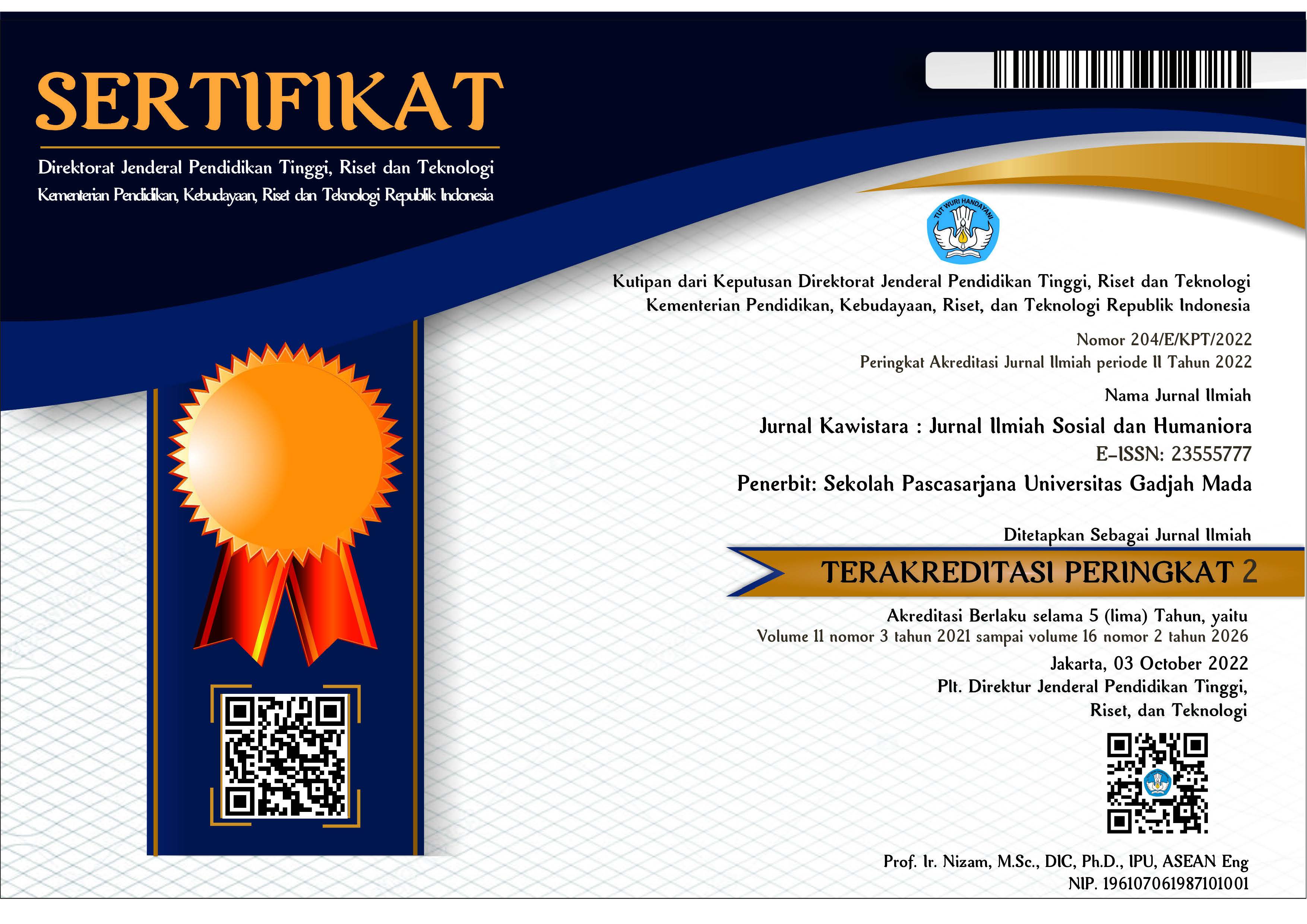PEREMPUAN DAN NEGARA: KAJIAN FEMINIS DALAM KONTEKS SOSIAL “BH” KARYA AGUS NOOR
Chris Woodrich(1*)
(1) Fakultas Ilmu Budaya Universitas Gadjah Mada
(*) Corresponding Author
Abstract
The struggle of the oppressed to obtain their rights is never complete. There is always someone who is
marginalized. In his short story “BH” Agus Noor presents a young woman who is ultimately killed by her bra, a garment which had repeatedly groped her breasts previously. At the surface this unrealistic story appears to be a simple critique against the repression of women. However, when placed against the socio-political backdrop in which it was written, namely that of the repressive New Order government under President Suharto, it is readily apparent that the oppression of women is used as a symbol of the general oppression and censorship in New Order Indonesia. In the New Order, as presented by Agus Noor, the aged (and thus empowered) forces used a familial form of “anakisme” to subjugate the general populace and thus ensure that the general populace cannot efciently overturn the power structure. This reading reminds us that women’s struggle for recognition and equality cannot be divorced from the struggles of other oppressed classes, which must ght for their rights and often collaborate for a greater effect.
marginalized. In his short story “BH” Agus Noor presents a young woman who is ultimately killed by her bra, a garment which had repeatedly groped her breasts previously. At the surface this unrealistic story appears to be a simple critique against the repression of women. However, when placed against the socio-political backdrop in which it was written, namely that of the repressive New Order government under President Suharto, it is readily apparent that the oppression of women is used as a symbol of the general oppression and censorship in New Order Indonesia. In the New Order, as presented by Agus Noor, the aged (and thus empowered) forces used a familial form of “anakisme” to subjugate the general populace and thus ensure that the general populace cannot efciently overturn the power structure. This reading reminds us that women’s struggle for recognition and equality cannot be divorced from the struggles of other oppressed classes, which must ght for their rights and often collaborate for a greater effect.
Keywords
Agus Noor, BH, New Order (Criticism of), Censorship, Feminism
Full Text:
PDFArticle Metrics
Refbacks
- There are currently no refbacks.
Copyright (c)
Jurnal Kawistara is published by the Graduate School, Universitas Gadjah Mada.











